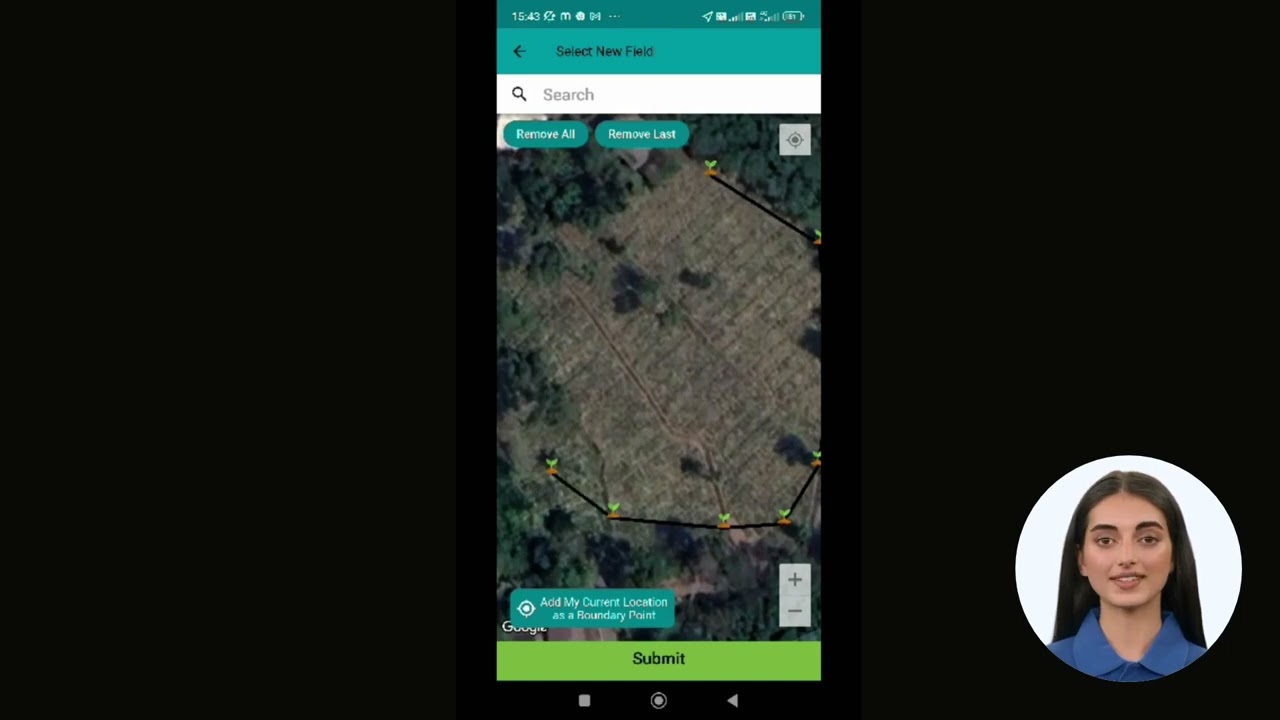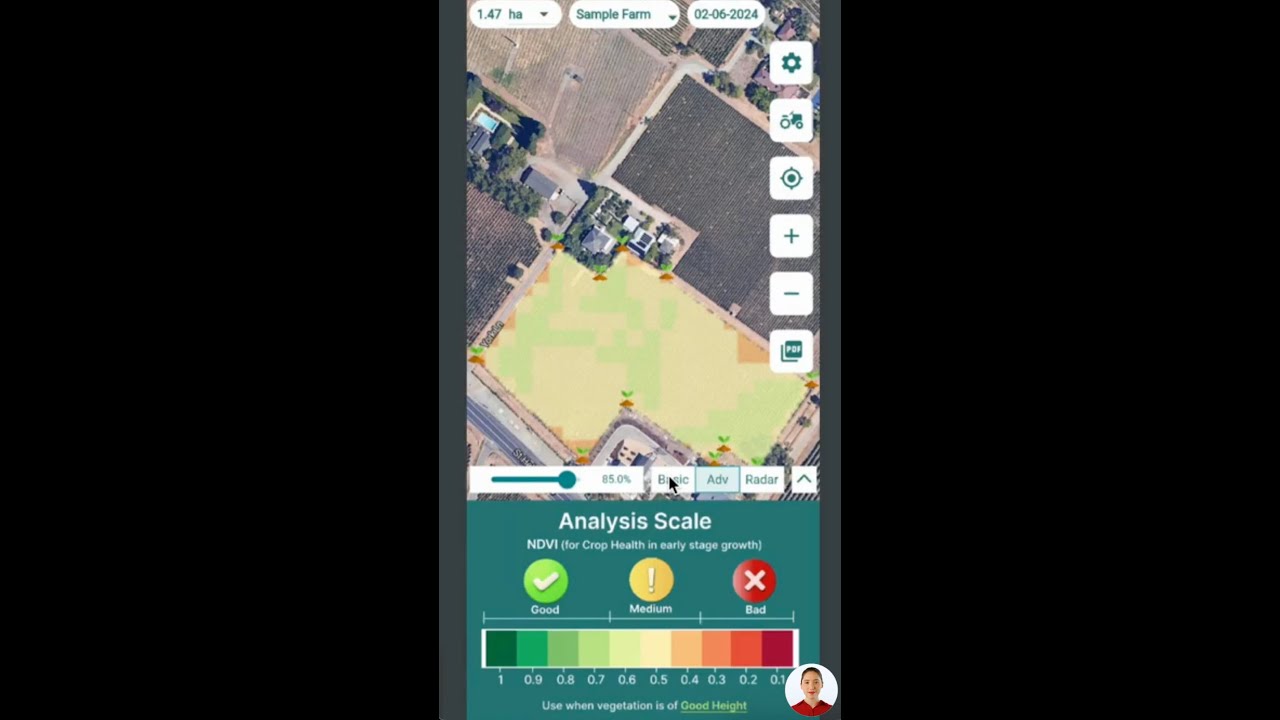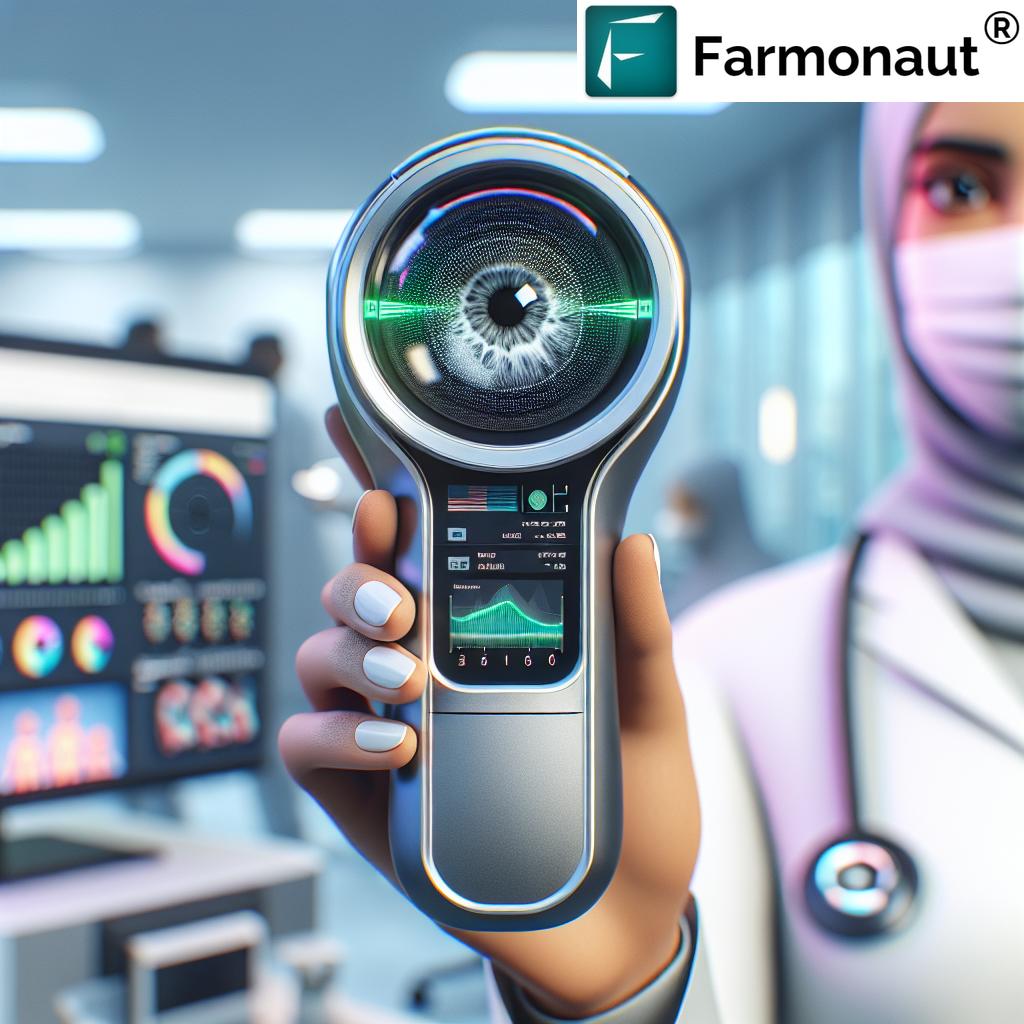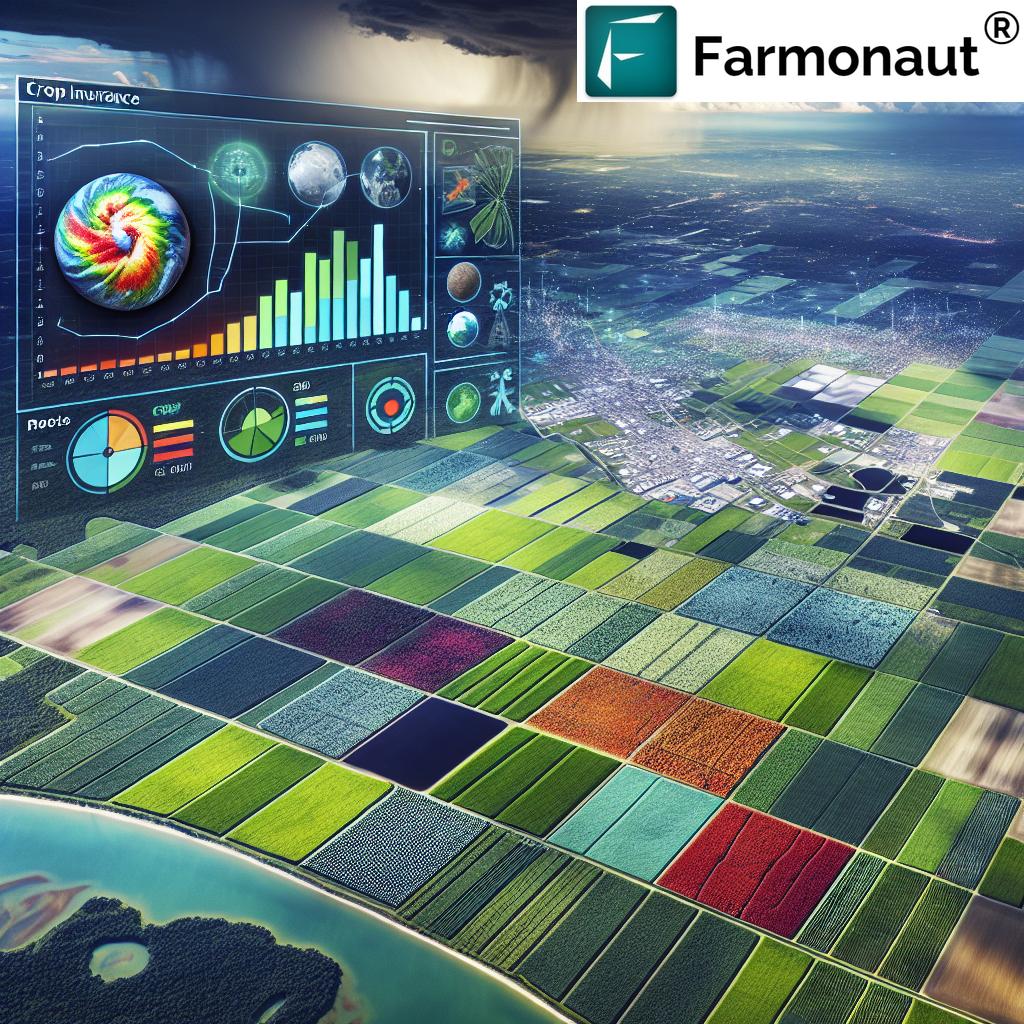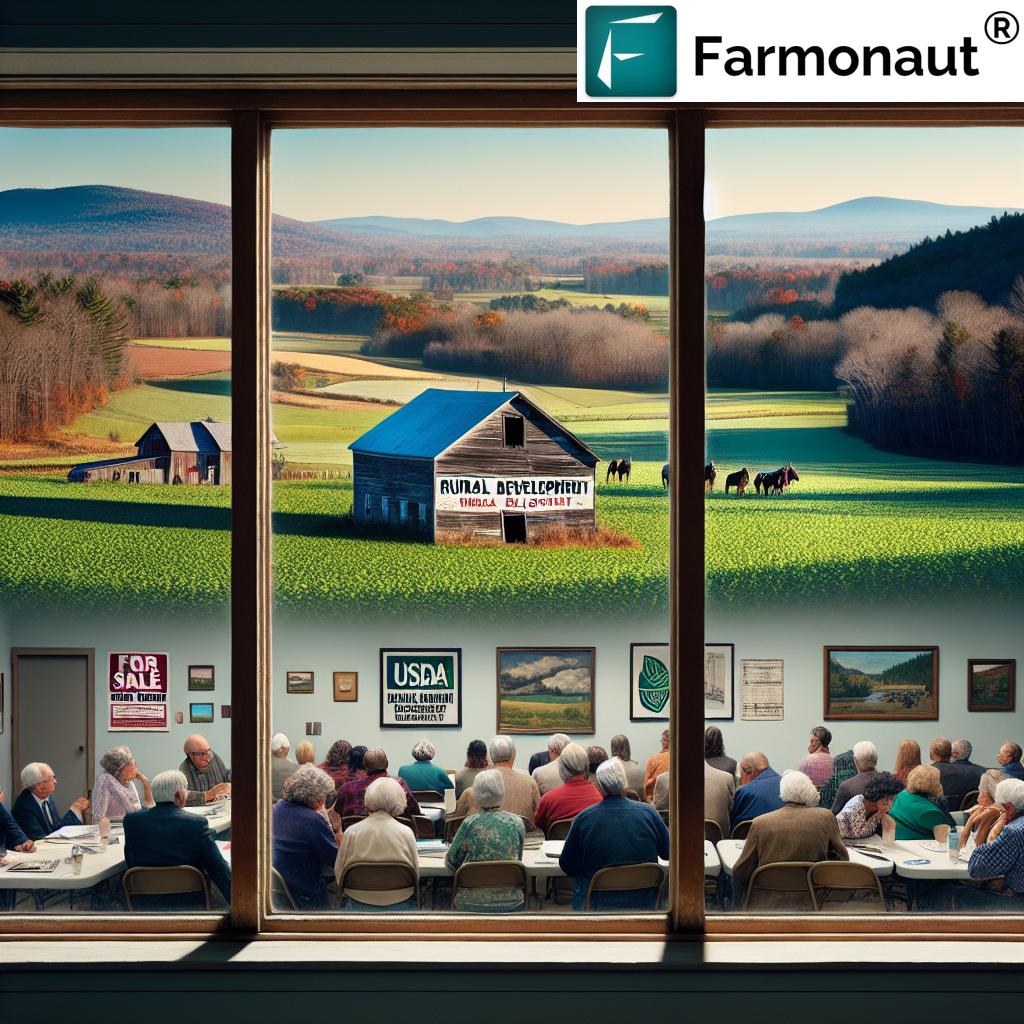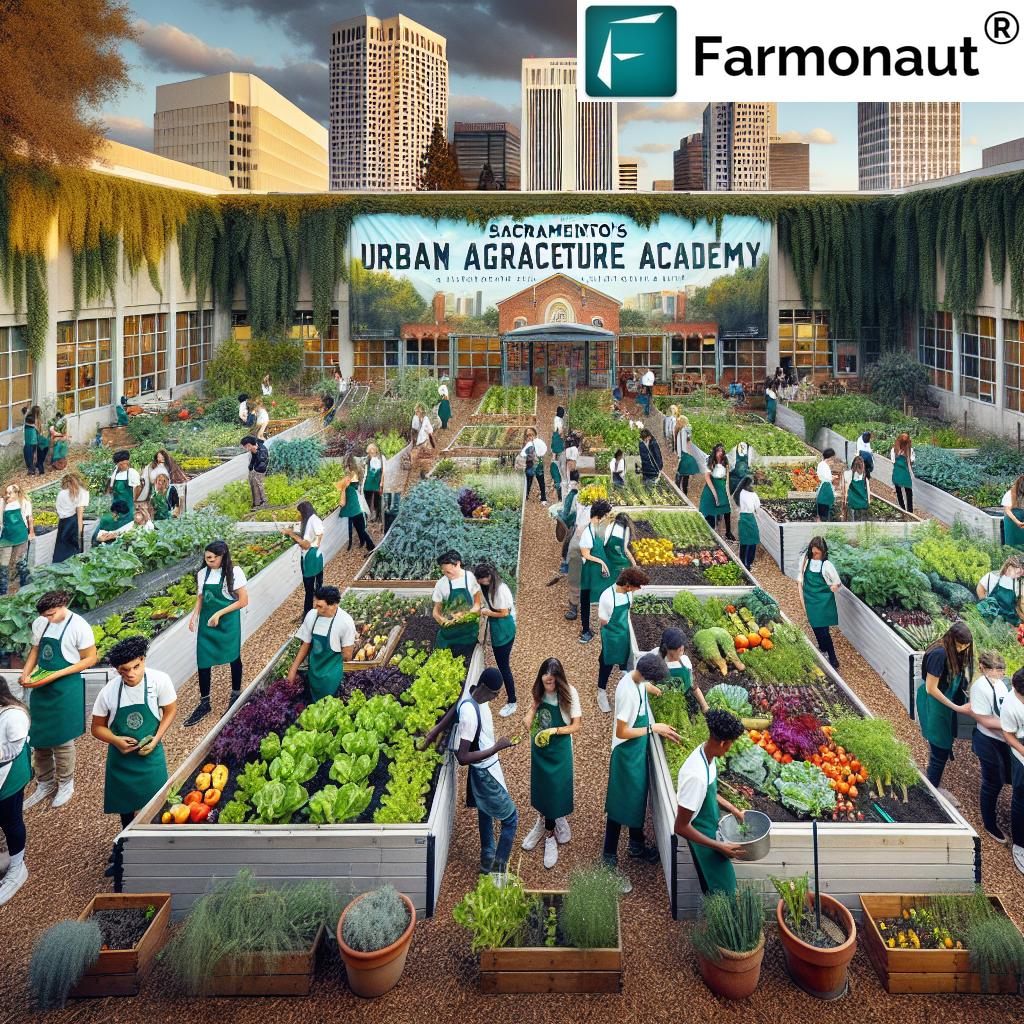From Rusty to Reliable: How Vintage Farm Equipment Restoration Fuels Personal Growth in Nebraska’s Heartland
“Over 65% of vintage farm equipment enthusiasts report improved problem-solving skills after restoring their first antique tractor.”
In the heart of the Midwest, where the golden fields of Nebraska stretch as far as the eye can see, we stumbled upon a heartwarming tale of personal growth and agricultural innovation. This is the story of a young farmer from Doniphan, Nebraska, who turned his passion for vintage farm equipment restoration into a thriving hobby that not only preserves the rich history of farming but also fuels his own personal development.
As we delve into this inspiring journey, we’ll explore how the restoration of rusty relics from the past can lead to a reliable future, both for the equipment and the restorer. From the clank of old engines springing to life to the satisfaction of seeing a once-forgotten piece of machinery parade proudly at the state fair, this blog will take you through the ups and downs of vintage farm equipment restoration and its profound impact on rural youth in agriculture.
The Birth of a Passion: A 1954 Chevy Truck Sparks the Flame
Our story begins with a dilapidated 1954 Chevy truck, abandoned in a forgotten corner of a family farm. For many, it was nothing more than a rusty eyesore, but for our young protagonist, it was the key to unlocking a world of possibilities. With determination in his eyes and grease on his hands, he set out to breathe new life into this vintage vehicle.
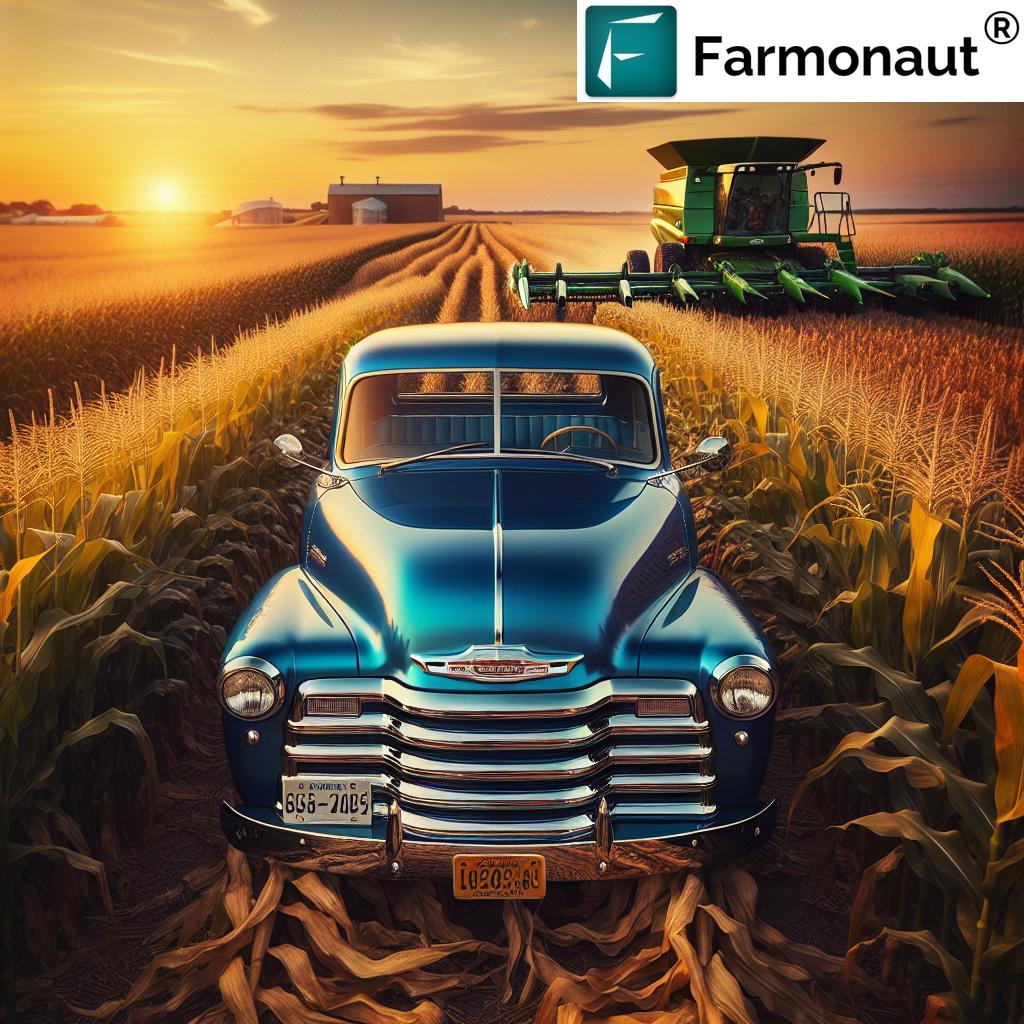
The process was far from easy. Sourcing parts for a truck older than his parents proved to be a challenge, but it also taught valuable lessons in resourcefulness and networking. Each hurdle overcome was a step towards not just a functional truck, but also personal growth and skill development.
Expanding Horizons: From Trucks to Tractors
With the success of the Chevy truck restoration under his belt, our young farmer’s appetite for bringing old farm equipment back to life only grew. His next conquest? A rusty old tractor that had been sitting idle in a neighbor’s barn for decades.
This project introduced him to the intricacies of antique tractor repair, a skill that would prove invaluable in his journey. As he delved deeper into the world of vintage farm machinery, he began to appreciate the engineering marvels of the past and how they laid the foundation for modern agricultural technology innovations.
The FFA Connection: Nurturing Rural Youth in Agriculture
Our protagonist’s passion didn’t go unnoticed. His involvement with the local Future Farmers of America (FFA) chapter opened up new avenues for sharing his knowledge and inspiring other rural youth. Through FFA, he organized workshops on farm engine repair tutorials, drawing crowds of eager young minds ready to get their hands dirty.
These workshops not only taught practical skills but also instilled a sense of pride in agricultural heritage among the participants. It was here that our young restorer realized the true value of his hobby – it wasn’t just about fixing old machines; it was about connecting generations and preserving the stories of those who came before.
Challenges and Triumphs in Farm Machinery Maintenance
As any seasoned restorer will tell you, vintage farm equipment restoration is not without its challenges. Our young farmer faced his fair share of obstacles, from stubborn rusted bolts to seemingly irreparable engine damage. But with each challenge came an opportunity to learn and grow.
He spent countless hours poring over old manuals, consulting with experienced mechanics, and even reaching out to collectors across state lines for advice. This dedication to learning and problem-solving didn’t just improve his restoration skills; it honed his ability to tackle any challenge life threw his way.
The Art of Sourcing: A Treasure Hunt for Parts
One of the most exciting aspects of vintage farm equipment restoration is the thrill of the hunt for parts. Our protagonist became a regular at salvage yards, antique shops, and farm auctions across the Midwest. Each successful find was a victory, bringing him one step closer to completing his latest project.
This quest for parts also introduced him to a network of like-minded enthusiasts, collectors, and farmers. These connections not only aided in his restorations but also broadened his understanding of agriculture’s past and present.
Showcasing Success: State Fair Agricultural Exhibits
“State fair agricultural exhibits featuring restored vintage farm machinery attract an average of 10,000 visitors per day.”
The culmination of months of hard work and dedication often found its stage at the Nebraska State Fair. Here, amidst the carnival rides and cotton candy stands, our young restorer proudly displayed his latest achievements in the agricultural exhibits.
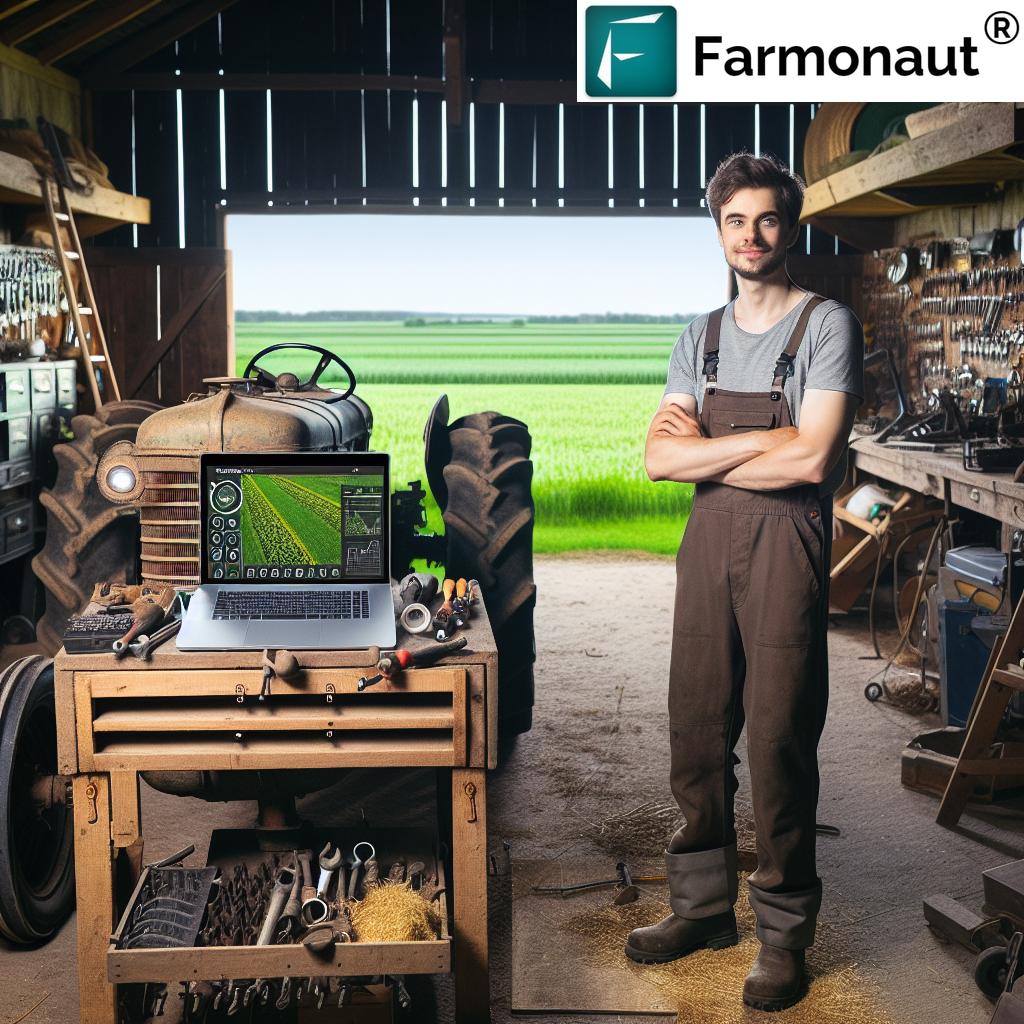
These exhibits weren’t just about showing off shiny restored tractors and trucks. They served as educational platforms, bridging the gap between past and present farming practices. Visitors young and old marveled at the ingenuity of early agricultural engineering, gaining a newfound appreciation for the evolution of farming technology.
The Role of Precision Agriculture in Modern Farming
While our protagonist’s heart lay with vintage equipment, he was far from oblivious to the advancements in modern farming technology. In fact, his experience with older machinery gave him a unique perspective on the importance of precision agriculture techniques in today’s farming landscape.
This is where innovative solutions like Farmonaut come into play. Farmonaut’s satellite-based farm management system offers a perfect blend of cutting-edge technology and traditional farming wisdom. By leveraging tools like real-time crop health monitoring and AI-based advisory systems, farmers can make informed decisions that optimize their resources and improve yields.
Bridging the Gap: Vintage Wisdom Meets Modern Tech
Our young restorer’s journey taught him that there’s value in both the old and the new. While he cherished the simplicity and durability of vintage farm equipment, he also recognized the efficiency and precision offered by modern agricultural technology innovations.
This balanced perspective led him to explore how traditional farming practices could be enhanced by incorporating modern solutions. For instance, he began using Farmonaut’s satellite imagery to monitor crop health on his family farm, complementing the insights gained from years of hands-on experience.
Sustainable Farming Practices: Learning from the Past, Looking to the Future
One of the most valuable lessons our protagonist gleaned from his restoration work was the importance of sustainability in farming. Many of the vintage machines he restored were built to last, designed with repairability and longevity in mind. This ethos of sustainability resonated deeply with him and influenced his approach to modern farming practices.
By combining the durability-focused design principles of the past with the resource-efficient technologies of the present, he began implementing sustainable farming practices on his family’s land. This approach not only reduced their environmental impact but also improved the farm’s overall efficiency and profitability.
The Collector’s Journey: Building a Legacy
As our young farmer’s skills and reputation grew, so did his collection of restored vintage farm equipment. What started as a hobby soon blossomed into a significant agricultural equipment collecting endeavor. Each piece in his collection told a story – of innovation, of hard work, and of the evolution of farming in the heartland.
His collection became more than just a personal hobby; it transformed into a living museum of agricultural history. School groups and farming enthusiasts from across the state would visit to learn about the roots of modern agriculture and gain inspiration from the ingenuity of past generations.
Inspiring the Next Generation
Perhaps the most rewarding aspect of our protagonist’s journey was the impact it had on other young people in his community. His passion for vintage farm equipment restoration sparked curiosity in many rural youths, showing them that there’s more to agriculture than just planting and harvesting.
Through mentoring programs and workshops, he passed on not just technical skills, but also the values of perseverance, problem-solving, and respect for agricultural heritage. Many of his mentees went on to pursue careers in agriculture, engineering, and even historical preservation.
The Economic Impact: Restoration as a Business
What began as a personal hobby eventually grew into a small but thriving business. Our young farmer found that there was a market for expertly restored vintage farm equipment, both among collectors and working farms looking for reliable, time-tested machinery.
This venture not only provided additional income for his family but also contributed to the local economy. He hired local youth to assist with restorations, sourced parts from area businesses, and attracted tourism through his growing reputation in the vintage farm equipment community.
Embracing Technology: The Role of Digital Tools in Restoration
While much of the restoration work relied on traditional tools and techniques, our protagonist wasn’t afraid to embrace modern technology to enhance his craft. He utilized 3D printing to recreate hard-to-find parts, leveraged online forums to troubleshoot complex issues, and even developed a smartphone app to catalog his restoration projects and parts inventory.
This blend of old-world craftsmanship and modern technology exemplifies the innovative spirit that drives both vintage restoration and contemporary farming practices. It’s a testament to how traditional skills and cutting-edge solutions can work hand in hand to drive progress in agriculture.
The Future of Farming: Lessons from the Past
As we look to the future of agriculture, there’s much to be learned from the vintage equipment our young restorer has brought back to life. The durability, simplicity, and repairability of these old machines offer valuable insights for designing sustainable agricultural technologies.
At the same time, the precision and efficiency offered by modern solutions like Farmonaut’s satellite-based crop monitoring system show how far we’ve come. By combining the best of both worlds – the wisdom of the past and the innovations of the present – we can create a more sustainable and productive future for farming.
Vintage Farm Equipment Restoration Timeline
| Year | Equipment Restored | Skills Learned | Personal Growth Milestone |
|---|---|---|---|
| 2018 | 1954 Chevy Truck | Basic engine repair, body work | Overcame fear of complex projects |
| 2019 | 1960s John Deere Tractor | Hydraulic system repair, parts sourcing | Developed networking skills within collector community |
| 2020 | Vintage Hay Baler | Mechanical timing, belt systems | Improved problem-solving abilities |
| 2021 | Antique Grain Thresher | Woodworking, historical research | Gained appreciation for agricultural heritage |
| 2022 | 1950s Farm Truck | Electrical systems, rust removal techniques | Enhanced patience and perseverance |
The Personal Growth Journey
As we reflect on our young farmer’s journey from rusty relics to reliable machines, it’s clear that the true transformation wasn’t just in the equipment he restored, but in himself. Through countless hours of trial and error, problem-solving, and hands-on learning, he developed a set of skills and qualities that extend far beyond the workshop.
- Patience and Perseverance: Restoring vintage equipment often involves slow, meticulous work. Our protagonist learned the value of taking his time and not giving up when faced with seemingly insurmountable challenges.
- Problem-Solving Skills: Each restoration project presented unique puzzles to solve, honing his ability to think creatively and approach problems from multiple angles.
- Attention to Detail: The precision required in restoration work cultivated a keen eye for detail, a skill that serves him well in all aspects of farming and life.
- Appreciation for History: Through his work, he gained a deep respect for the ingenuity of past generations and the evolution of agricultural technology.
- Community Building: His passion brought together like-minded individuals, fostering a sense of community and shared purpose.
Bridging Generations: The Impact on Family and Community
One of the most heartwarming aspects of our protagonist’s journey was how it brought together different generations. Older farmers in the community, who had firsthand experience with many of the vintage machines, became valuable mentors. They shared not just technical knowledge, but also stories and wisdom from their years on the land.
This intergenerational exchange had a profound impact on the community. It fostered a sense of continuity and respect for agricultural traditions while also encouraging innovation and progress. The restored equipment became a tangible link between past and present, sparking conversations about the future of farming in Nebraska and beyond.
The Role of Technology in Modern Agriculture
While our young farmer’s passion lies in restoring vintage equipment, he’s also acutely aware of the crucial role technology plays in modern agriculture. Solutions like Farmonaut’s satellite-based farm management system represent the cutting edge of agricultural innovation, offering precision and efficiency that would have seemed like science fiction to the original users of the vintage equipment he restores.
Farmonaut’s platform provides valuable services such as:
- Real-time crop health monitoring: Using satellite imagery to track vegetation health and soil moisture levels.
- AI-based advisory systems: Offering personalized recommendations for crop management.
- Resource management tools: Helping farmers optimize their use of water, fertilizer, and other inputs.
By embracing both the wisdom of the past and the innovations of the present, farmers like our protagonist are well-positioned to face the challenges of 21st-century agriculture.
Explore Farmonaut’s API for advanced agricultural data integration
Sustainable Farming: Lessons from the Past, Tools for the Future
The journey of vintage farm equipment restoration has taught our young farmer valuable lessons about sustainability. Many of the old machines he works on were built to last, designed with repairability in mind. This ethos of durability and conservation aligns well with modern sustainable farming practices.
By combining the principles of conservation he’s learned from vintage equipment with the precision offered by modern technology like Farmonaut, our protagonist is helping to shape a more sustainable future for agriculture in Nebraska. This blend of old and new approaches can help address pressing issues such as water conservation, soil health, and carbon footprint reduction.
Looking to the Future: The Ongoing Journey
As we conclude our tale of rusty relics and personal growth, it’s clear that the journey is far from over for our young farmer. Each restored piece of equipment, each new technological tool mastered, is another step in his ongoing development as a farmer and as a person.
His story serves as an inspiration not just to those interested in vintage farm equipment restoration, but to anyone looking to fuel their personal growth through passion and dedication. It reminds us that there’s value in preserving the past while embracing the future, and that the most important restoration work we can do is often on ourselves.
Conclusion: From Rusty to Reliable, From Novice to Expert
The journey from rusty relics to reliable machines mirrors our protagonist’s own transformation from curious novice to respected expert. Through his dedication to vintage farm equipment restoration, he’s not only preserved important pieces of agricultural history but also cultivated a set of skills and values that will serve him well in all aspects of life.
As we look to the future of farming, it’s clear that success will come from balancing respect for traditional wisdom with openness to new technologies. By embracing both the lessons of the past and the innovations of the present, farmers like our young restorer are well-equipped to meet the challenges of feeding a growing world while preserving the land for future generations.
Whether you’re a seasoned farmer, a budding agriculturist, or simply someone fascinated by the intersection of history and technology, there’s something to be learned from this tale of transformation in Nebraska’s heartland. It reminds us that with passion, perseverance, and a willingness to get our hands dirty, we can all turn the rusty parts of our lives into something reliable, valuable, and deeply personal.
Check out Farmonaut’s API Developer Docs for technical integration details
FAQs
- Q: How can I get started with vintage farm equipment restoration?
A: Begin by researching the type of equipment you’re interested in, joining online forums or local clubs for enthusiasts, and starting with smaller, manageable projects to build your skills. - Q: Are there any safety concerns when restoring old farm equipment?
A: Yes, always prioritize safety by wearing appropriate protective gear, working in a well-ventilated area, and being cautious with old electrical systems and potentially hazardous materials like lead paint. - Q: How can I find parts for vintage farm equipment?
A: Check salvage yards, online marketplaces specializing in vintage parts, attend farm auctions, and network with other collectors. Some companies also manufacture reproduction parts for popular vintage models. - Q: Is vintage farm equipment restoration a viable business opportunity?
A: It can be, especially if you develop expertise in rare or sought-after models. Many collectors and working farms value well-restored vintage equipment. - Q: How does modern technology like Farmonaut complement vintage farming techniques?
A: While vintage equipment offers durability and simplicity, modern tech like Farmonaut provides precision and data-driven insights. Combining both approaches can lead to more efficient and sustainable farming practices.




